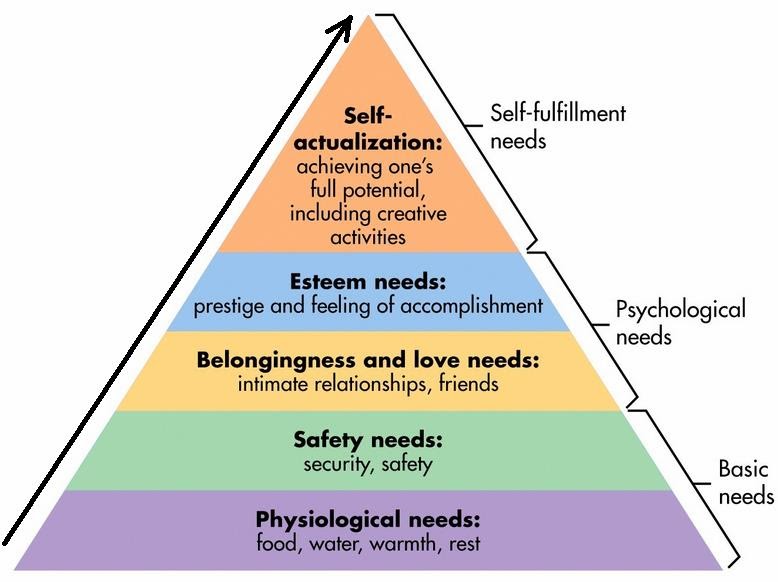Constraints of Audience & Appealing to Maslow’s Hierarchy of Needs
Knoll Knudson
A great way to enhance the effectiveness of a speech is to accurately identify constraints that the audience may have. By understanding why people have hesitations about implementing the action of the speech, the speaker can further tailor the information for the audience. With the audience consisting of many different people, a wide range of constraints are required to ease hesitations. The constraints need to appeal to the audience’s needs to improve the chances of the audience taking action.
Maslow’s Hierarchy of Needs
By incorporating a specific need from Maslow’s Hierarchy of Needs the audience can immediately see a connection and benefit of implementing the change. A visualization of Maslow’s hierarchy of needs can be seen below.

Identifying constraints and stating which needs are being connected with the action allows the audience to easily see the connection and understand the benefit. An example of identifying constraints and connecting to the psychological is how the feeling of accomplishment is felt when you make your bed every morning. Telling the audience that while you may feel that you do not have time in the morning, it is still important to make your bed as the small accomplishment will make you more likely to remain productive throughout the entire day.
Some of the constraints that are stated to the audience can also impact the basic needs. Examples of the physiological needs are enhanced are shown by not going on your phone before bed to improve sleep quality. People may be hesitant as they are addicted to their phones but, when improving a physiological need to get better sleep they will be better persuaded.
Finally, self-actualization can be impacted by convincing the audience to take the action they may feel they are achieving their own full potential.
Ethos, Pathos, and Logos
Identifying the constraints that the audience has increases the ethos, pathos, and logos of the speech. The ethos of the speaker is greatly influenced by the thoughtfulness of the constraints identified. Having many constraints answered shows the audience that you are passionate about the topic and that you have invested your time in the speech.
Audience members will appreciate that you are trying to alleviate their concerns with the action. By trying to put yourself in the audience’s place, the pathos is enhanced as the audience will feel connected to you. Talking about your own personal constraints will connect you to the audience as the audience can identify what you have gone through. The audience will feel empathy and empowered to act.
With finding constraints, the unknown can be a major deterrent for the audience. Understanding that they do not know what to expect can be alleviated by describing the situation. An example of describing the situation to alleviate fear is shown by trying to persuade people to take a fitness class. Describing the environment around a class can make people more comfortable as they will have been informed on what to expect.
When looking at the constraints the logos appeal can be used tactically to stop the hesitation. Using statistics that directly counter the constraint increases the persuasion. With constraints, there is the potential for misinformation to be the reason they have not taken action. Using accurate statistics can convince the audience that since there are many great benefits they should take action.
Statistics can also show the urgency to take the action. Audience members may not be aware that there is a need and by showing them that there is they can be convinced to do action. An example of not knowing the need is with donating blood. Many people are unaware of how much blood is needed and by telling the audience a statistic about the need they will be encouraged to act.
An example of not knowing the need can be shown by understanding how much blood is required to help someone that is in a car accident. Using the statistic of 50 donors are required to save just 1 person that is seriously hurt in a car crash shows the urgency to donate. The audience understands how many people need to donate to save a single life and they will be persuaded to act.

